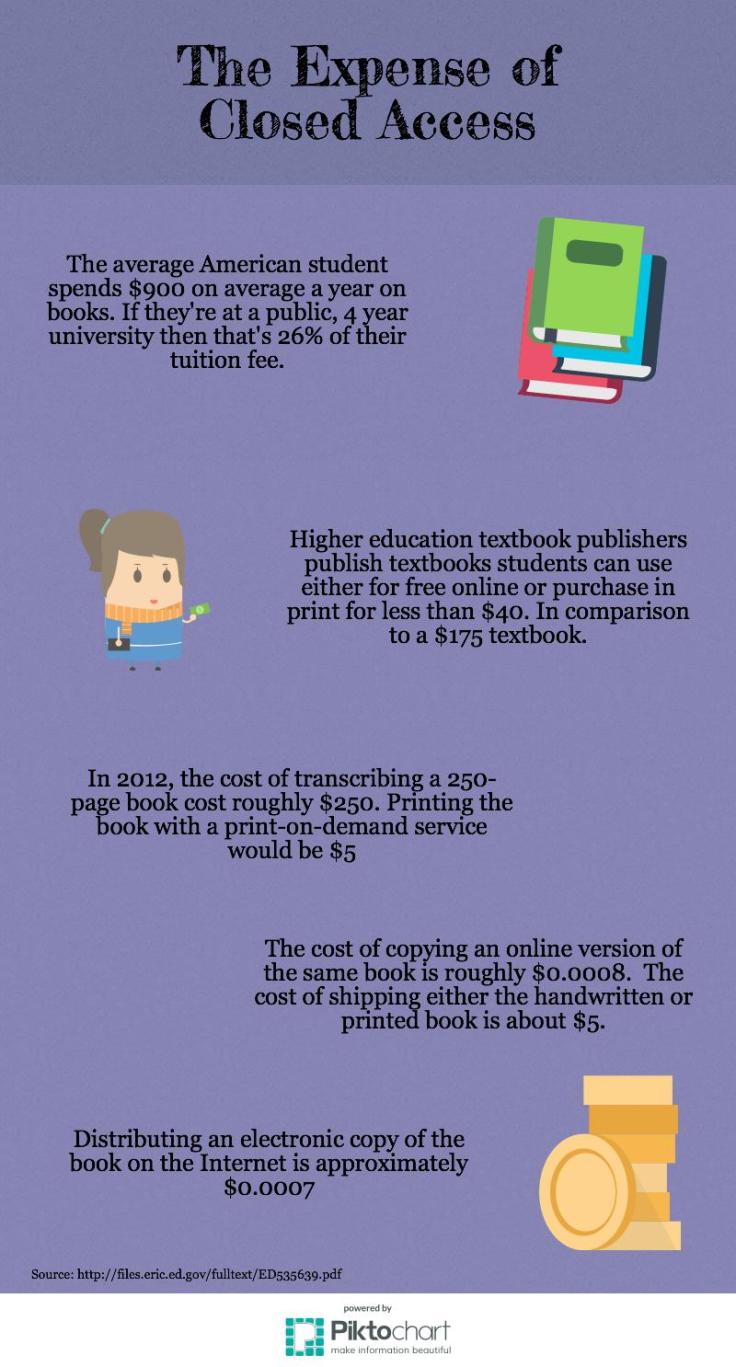Topic 5: Open Access
Open access is scientific and technological information that is open for the world to read, access, and build on. They are split into two components: free to read meaning there’s no pay wall, and free to re-use meaning users who have access to the information are able to use new tools to build on top and conduct further research. Journals have long changed from publishing findings through printing and the process of getting it checked over by several people. This is due to developing technology resulting in digitisation, and the price increase of subscriptions. This video expands and gives more detail to what open access is.
If a content producer has open access to their work then they are able to reach bigger audiences, those who perhaps aren’t able to afford to pay publications costs. Open access allows their information to be cited by many and therefore building their reputation and legitimacy. Resources which are made available to the public are incredibly beneficial to the education sector. Not only do the costs of supplying students information get brought down considerably, the journals and articles are able to enhance classroom experiences.
Teachers from all levels of education need access to journals to teach their students to a high standard level but fail to do so without having to pay for the publications. University textbooks have increased four times the rate of inflation since 1994 (Wiley et al., 2012). As a result of this, the less wealthy countries (low and middle income) struggle to provide the necessary resources for students.

However, there are downsides to having open access made available to everyone. The content producer has to either pay for the publication fees or find a sponsor or company to pay it for them. Some people say open access doesn’t allow for investment in technology because media companies aren’t receiving the high revenues they need. A 2013 article said 90% of online content was likely to be behind a paywall in the future and there would be a 27% increase in profit margin for media companies in the next 3 years.
As we are 3 years down the line we can take a look at the stats and figures to see how they compare. Currently, the UK publishing industry grows to £4.4bn – £1.1bn more than 2013. This may be because “there remains a special place in the consumer’s heart for the aesthetic pleasure that printed books can bring.” (Knight, 2016) This leads to the idea open access journals do not have the same reputation as classic tradition journals because people trust printed books that have been reviewed before being printed.
References:
